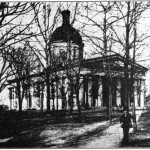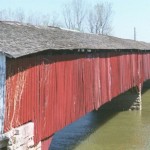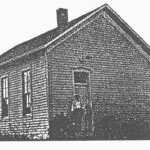Among the various haunts across the state that lend themselves to the Halloween spirit is an architecturally significant landmark listed on the National Register of Historic Places.
A Gothic-Revival marvel just southwest of Indianapolis, the private residence has links to the Marion County Courthouse and DePauw University. Along the way, it’s fostered a ghost story or two.
While he was building the Marion County Courthouse, Scots-born stonemason David Nicholson designed and began constructing his own Decatur Township home, near the village of Valley Mills. Nicholson and his business partner, fellow Scotsman Adam Scott, laid the cornerstone for the courthouse in 1872.
Many of the construction materials for the county building show up again in Nicholson’s home, the design of which seems indebted to the principles of Andrew Jackson Downing. The architect’s mid-nineteenth-century publications Cottage Residences and The Architecture of Country Houses were in wide circulation. Their legacy is evident in the asymmetry of the home Nicholson designed, along with such features as its scrollwork, decorated rafter tails, and multiple dormer windows.
The Gothic-Revival specimen could serve as the archetype of the haunted house.
Divorcing soon after taking up residency in the house, Nicholson sold it in 1879. It eventually passed into the hands of John Lindsay Rand, whose heirs retained the property until the late 1950s, at which point it was donated to DePauw University.
When the university sold the property to a commercial developer, the fate of the Nicholson-Rand Home hung in the balance. Historic Landmarks Foundation of Indiana intervened in 1997, moving the home half a mile south of its original location on Southport Road.
During the move, a photo-journalist captured the image of what seemed to be a figure in an upstairs window. The filmy presence nudged gory tales out of locals and prompted investigations of paranormal activity.
A rumor circulated that a border had hung himself in an upstairs bedroom. Another, that a child had died in an accident nearby. Still others suggested that the home had been a stop on the Underground Railroad, and slaves hiding in the basement had perished in a fire. None of the stories have been historically documented.
Although not warranted against ghosts, the historical integrity of the High Victorian Gothic tour de force is now safeguarded by protective covenants.






















